How to make compost – the expert guide
Find out how to make compost and you'll be helping the planet by gardening sustainably, as well as feeding your plants with all the nutrients they need to stay looking good
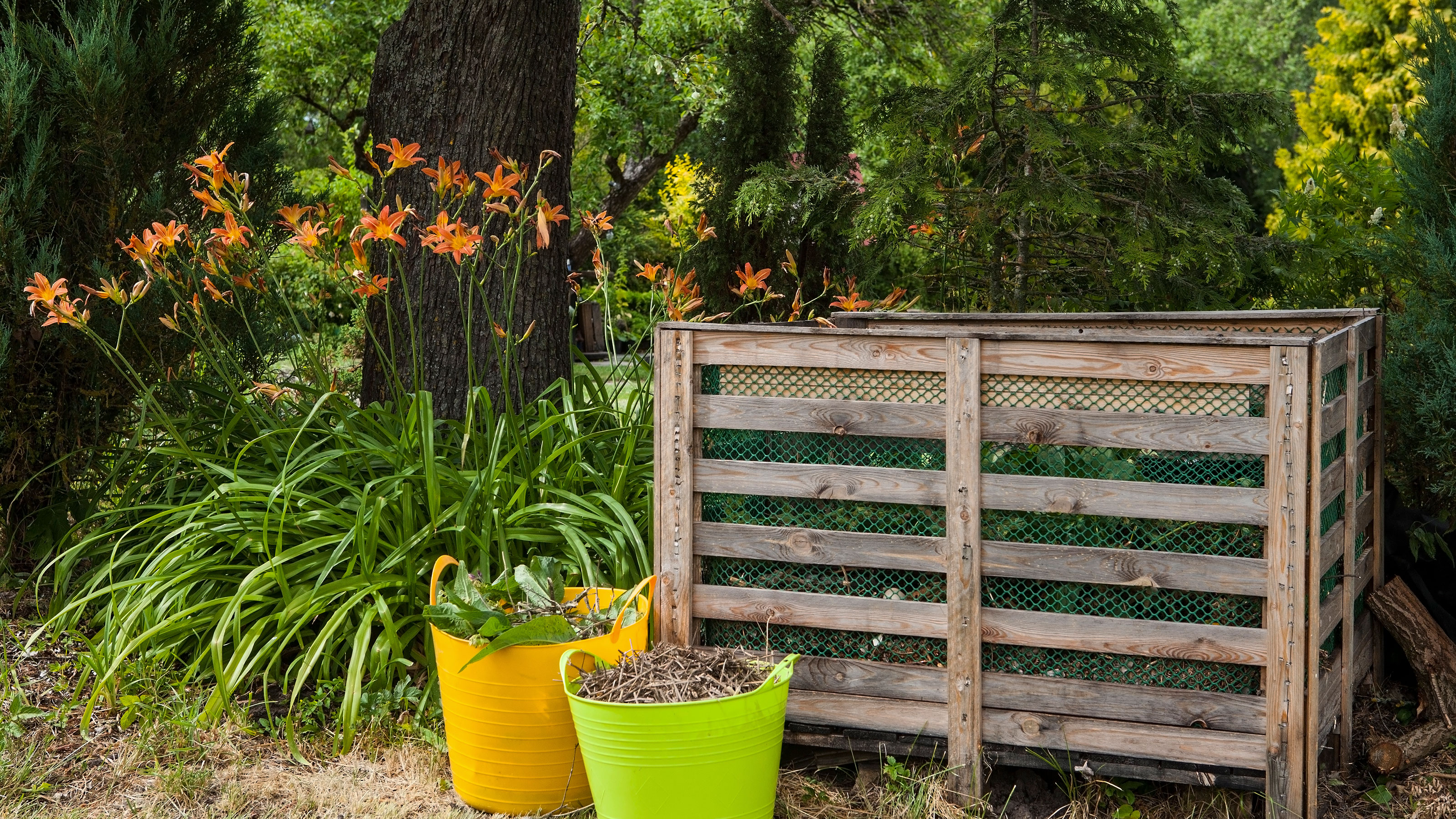

It's so simple to do that when you find out how to make compost you’ll soon wonder why you’ve never done it before. Making compost at home is the cheapest and easiest way to improve your soil. It will feel good too when you know you're feeding your garden with homemade goodness and everything starts blooming so abundantly.
There's more to making compost than simply throwing peelings on a heap and keeping your fingers crossed. If too much of one ingredient goes on at the same time, the mix will become uneven and your compost production will slow down. Too many grass cuttings, for example, will lead to your compost becoming a dank mass.
It's an easy process as long as you follow a few key pointers. Our expert guide to how to make compost will soon set you on the right track.
How do you make compost at home?
At home, you can start to make your own compost at any time of year but late summer to early winter is the peak time to do it.
Choose the right compost bin for the space you have available amongst your garden ideas, and put it in the best position, which is generally a spot in dappled shade.
It's key to get the right mix of ingredients when it comes to making compost at home. To avoid making a common composting mistake, think of it as following a recipe where you pull together the right things then let them marinate, 'stirring' occasionally and adding water if the mix is a little dry.
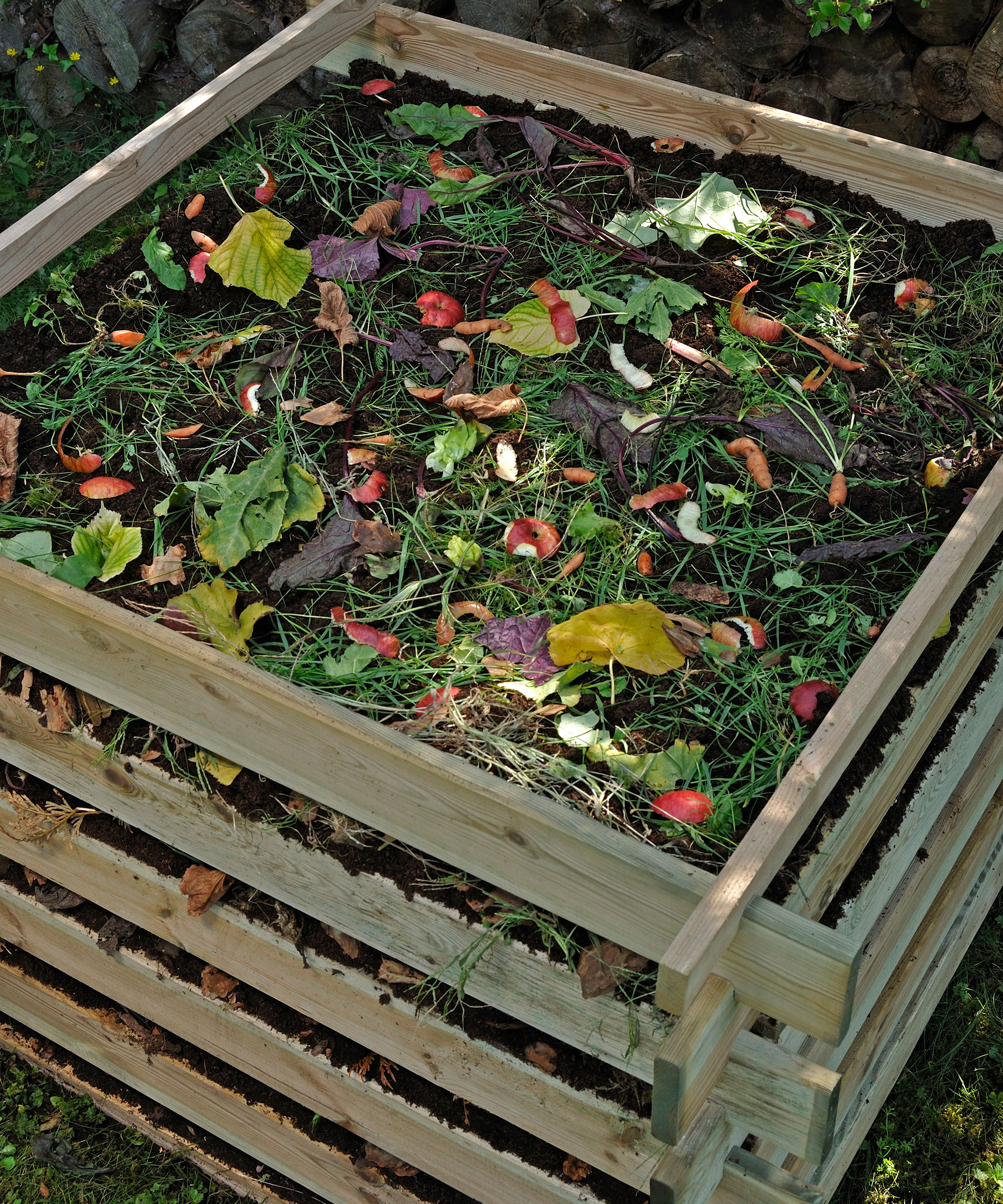
How to make compost: a step by step guide
Below, we tell you how to make compost in a simple step-by-step.
1. Choose the right compost bin
Your compost bin should have ventilation and drainage, so a traditional slatted wooden one is ideal. Contact with the ground is important too, because the soil will help to activate the composting process.
Plastic water butt tubular compost bins have an open base, a fitted plastic lid and a sliding front access hatch and are good for small gardens as they’re so compact. They can also be used for ‘continuous composting’ where you add green waste at the top and get a constant supply of compost out at the bottom.
2. Choose the right site to make compost
Position the compost bin away from the house but in a place where it’s still accessible from the kitchen. Stand the bin on soil so that any liquid from decomposing waste can drain away.
It's always best to place your compost heap or bin in a shady or part shady spot. Bear in mind that if you are planning a kitchen garden, it might be handy to have the compost nearby.
3. Get the compost mix right
The best way to create good compost is with a good mix of woody and green waste materials. Avoid using too much of one item. By layering up your compost heap correctly you can speed things up too.
Line the bottom with straw or old newspaper then layer up green material (grass, dead headings, fruit and vegetable peelings, coffee grounds, soft prunings) with brown waste (such as shredded cardboard and newspaper, straw, twigs, dry leaves and woody prunings cut as small as possible).
The ratio should be 25 parts brown materials to one part green materials. Ash from the BBQ is good too but it should be cold and not contain food scraps.
4. Turn the compost regularly
It's important to loosen up your compost mix regularly. Every few weeks, lift and mix the plant material with a fork to aerate it as it rots down. Without sufficient air, the compost can become compacted, slimy and rotten.
When turning the compost in autumn and winter, watch out for hibernating garden wildlife that may be sheltering there, attracted by the heap’s warmth.
For larger compost heaps you can also use a compost aerator to pump air into the mix.
Some people choose not to turn their compost but most prefer to.
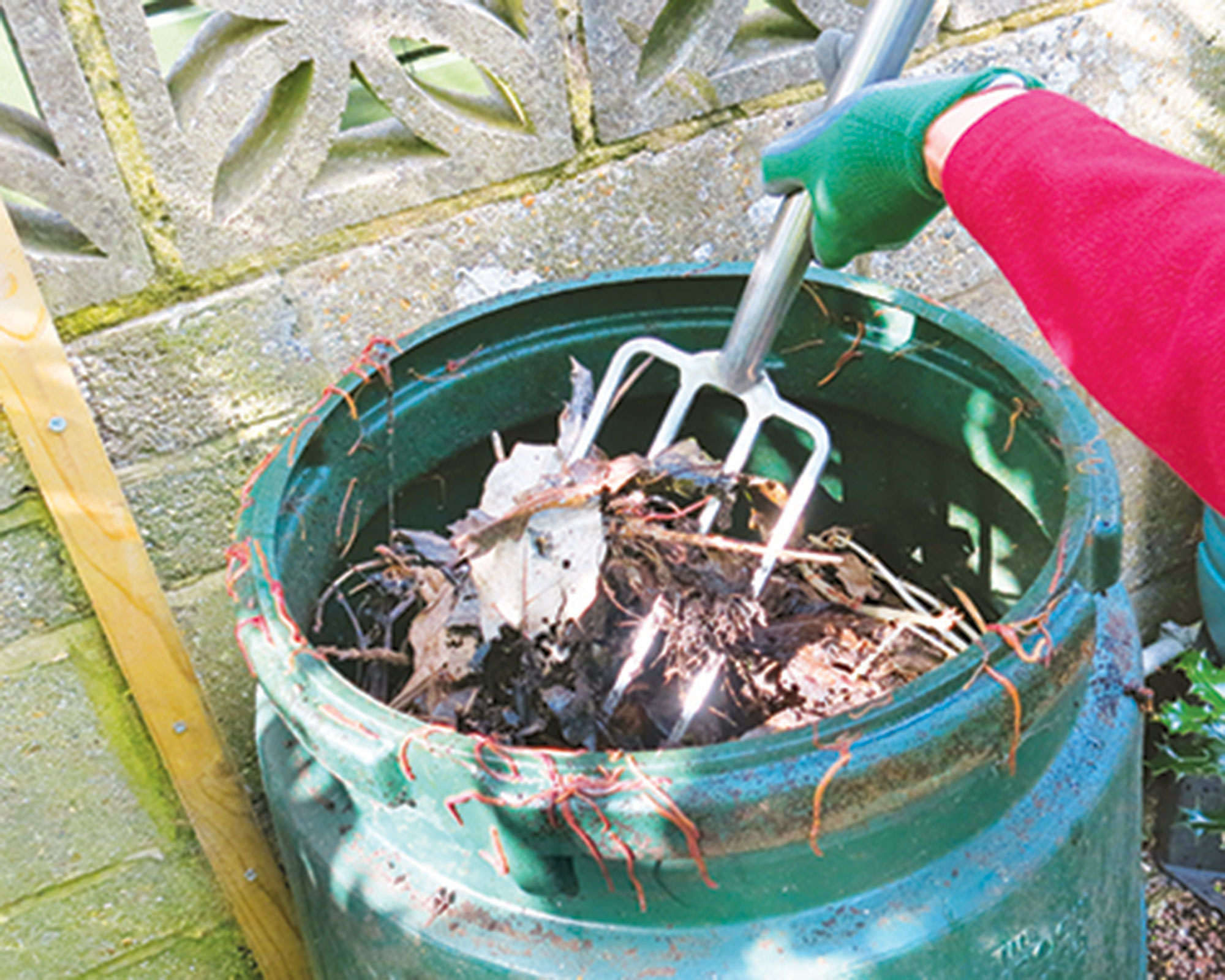
5. Keep compost moist
A lack of moisture will slow down or even stop the decomposition of the compost, so during very dry weather water it every now and again. Fresh vegetable and fruit peelings and fresh grass clippings are another good way of adding moisture.
If your compost becomes too wet, try adding some chopped woody material, or shredded cardboard or newspaper.
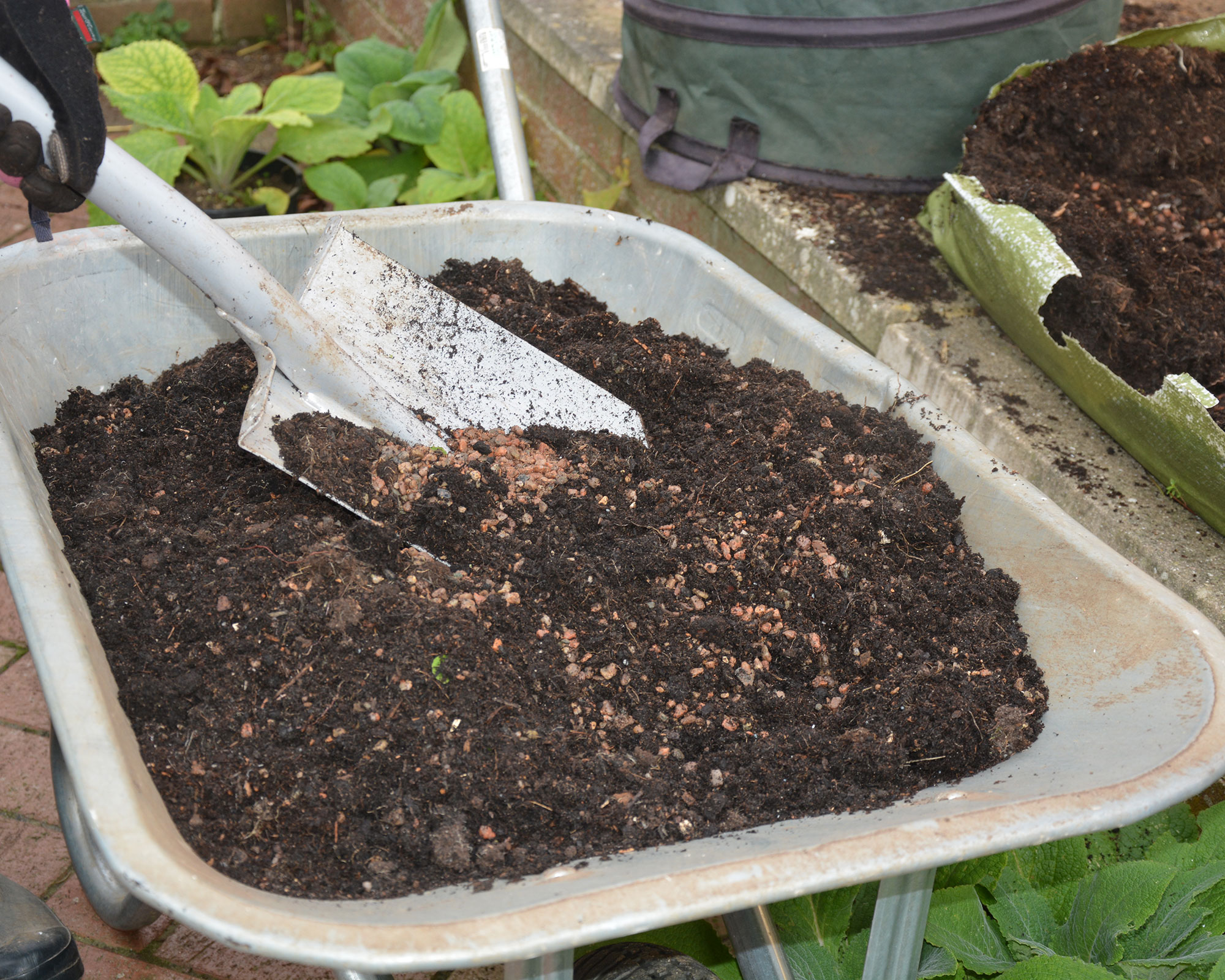
Do I need to cover my compost?
If your compost heap is bothered by flies then make sure you cover any kitchen waste with garden prunings after adding it to the heap and check that moisture levels are not too high, which could cause insufficient air in the heap.
It’s also a good idea to cover your compost heap if you're adding food waste to avoid any problems with rodents.
If it's rainy use a cover to protect your compost, or you could end up with a mixture that is too wet.
How long does it take to make compost?
It can take anywhere between several months and over a year for compost to be ready for use in your garden, depending on the temperature and materials you're using, and how well the compost is aerated.
You'll know it's ready when it has a rich, crumbly texture, and is all the same deep brown color. Compost that’s ready has a pleasant smell of damp earth. Not all the compost in your heap will mature at the same rate though, and you may end up discarding some of it, or putting it back into the container to continue rotting as you add in new layers of waste.
If you try hot composting you'll see great results in as little as four weeks. As long as you monitor the compost and record the temperature every day, plus turn the compost every four to five days you’ll be on the right track. After one month, you should have a dark, crumbly compost. Let it rest for a couple of weeks before you start using it.
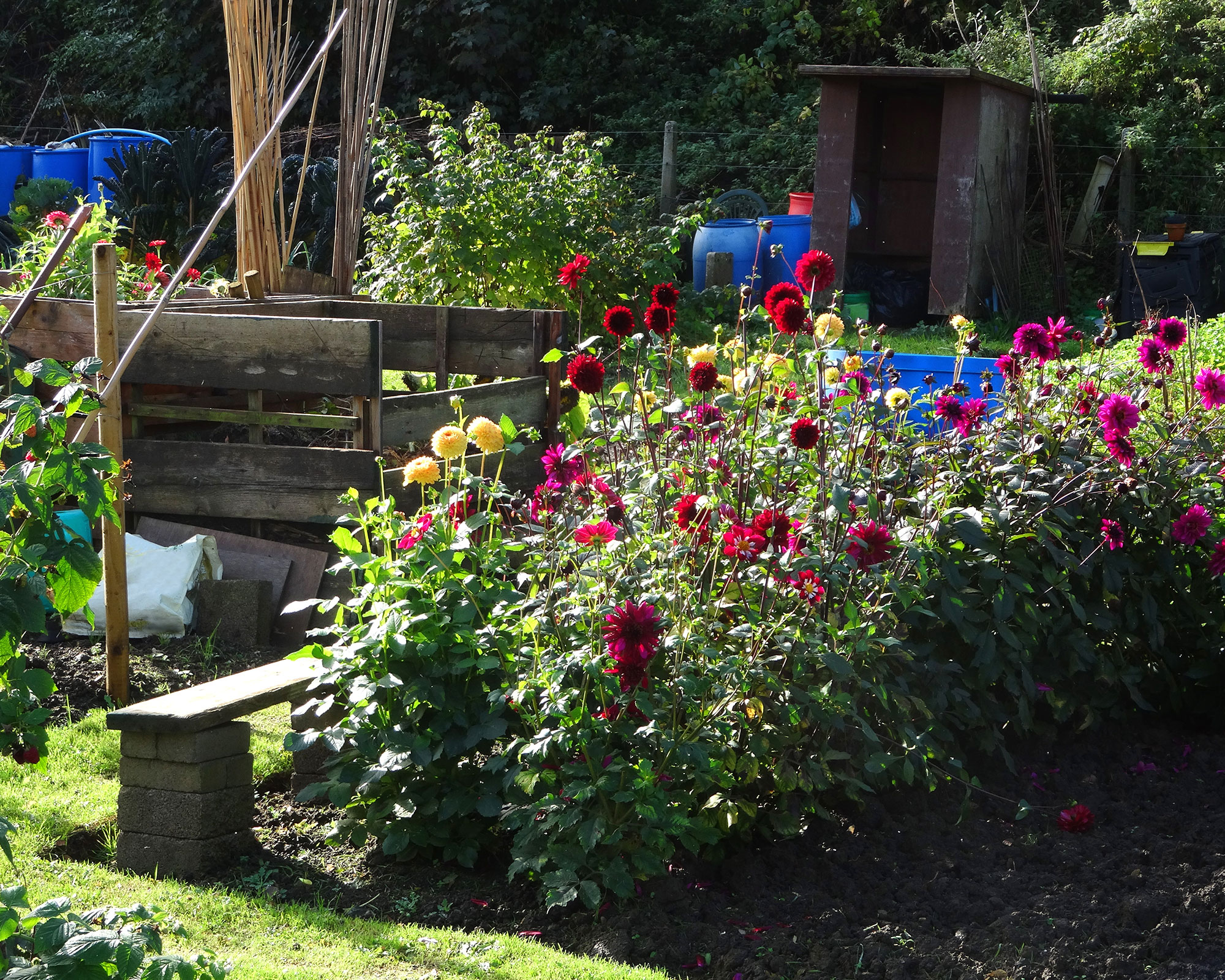
What’s the fastest way to make compost?
Hot composting is the new compost trend. The latest hot composting bins let you make high-quality compost at home in weeks. You can also make your own hot compost heap if you don't want to invest in a bin. This method requires a little more time, but it's pretty straightforward too.
Or try a compost tumbler, which is a sealed drum that turns with a push, or has a handle attached. Place your composting material in the drum and turn the handle every two to three days and you'll soon have rich, crumbly compost, generally within three weeks.
For another speedy process, try wormery bins, especially if you have a small garden as they take up so little space. A starter kit includes everything you need, including the worms themselves.
Wormeries are self-contained, and you leave them to turn your kitchen waste into rich crumbly compost. In addition, they provide a concentrated liquid feed packed with nutrients, known as leachate, that you draw off using the tap supplied. The dilution rate is 1:10 (1 part leachate to 10 parts water) and, for sensitive plants, use a ratio of 1:20.
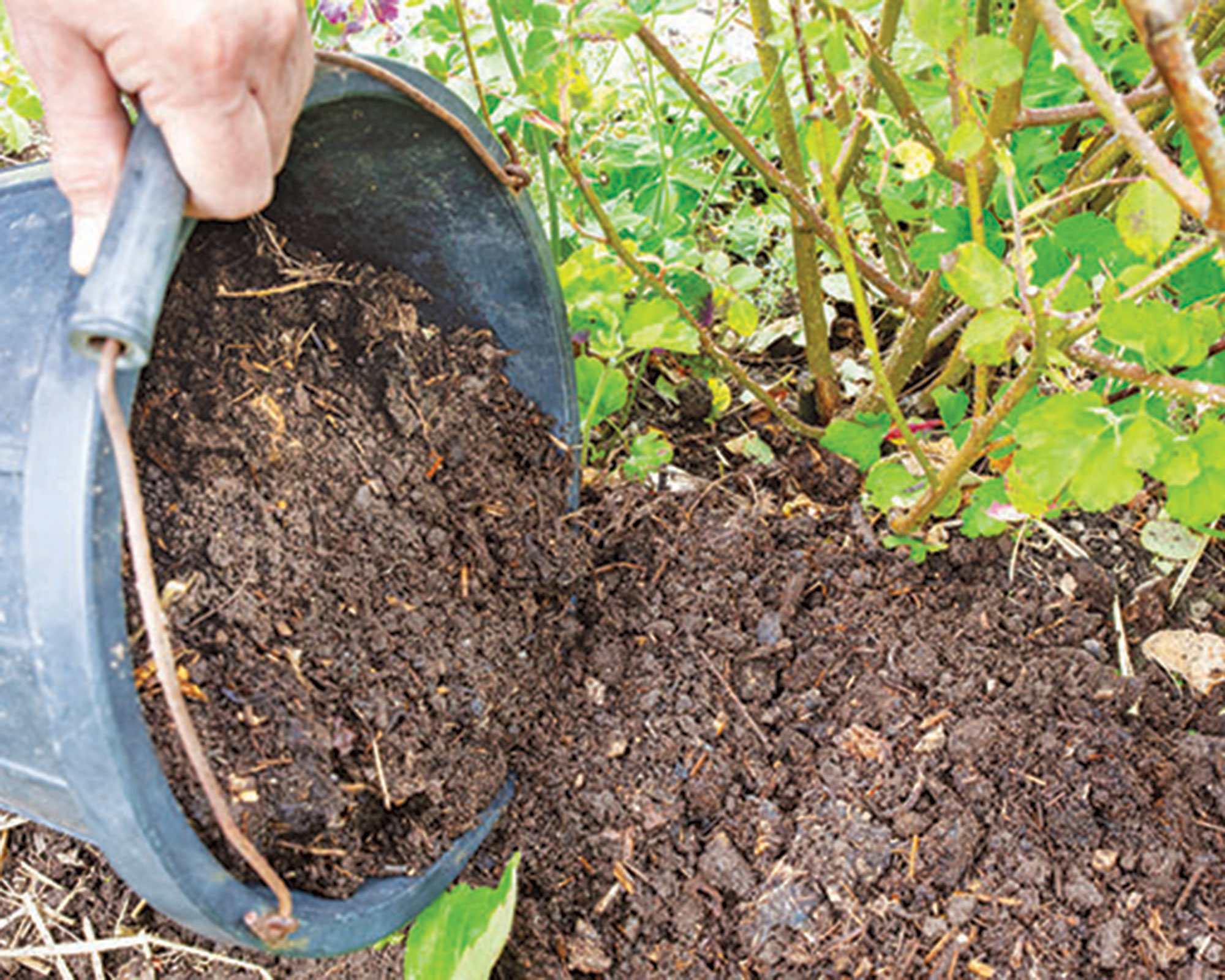
What’s the difference between hot and cold composting?
There are two main methods when it comes knowing how to make compost. Cold composting is the more commonly used method as described in our easy step by step guide above. This involves slowly adding organic matter to a compost heap and leaving it to break down in its own time.
Hot composting is all about temperature. It refers to a method that produces compost in a shorter period of time stimulated by warm temperatures in the heap.
'Hotbin composters are really good and fairly compact too,' says garden designer Tom Massey. 'They're hot aerobic composting bins that reach temperatures of 60°C, breaking down food and garden waste into compost in just 30-90 days which is much faster than a standard compost bin. They compost all garden and all kitchen waste (including cooked and raw food and leftovers) and there’s no turning or accelerators required.'
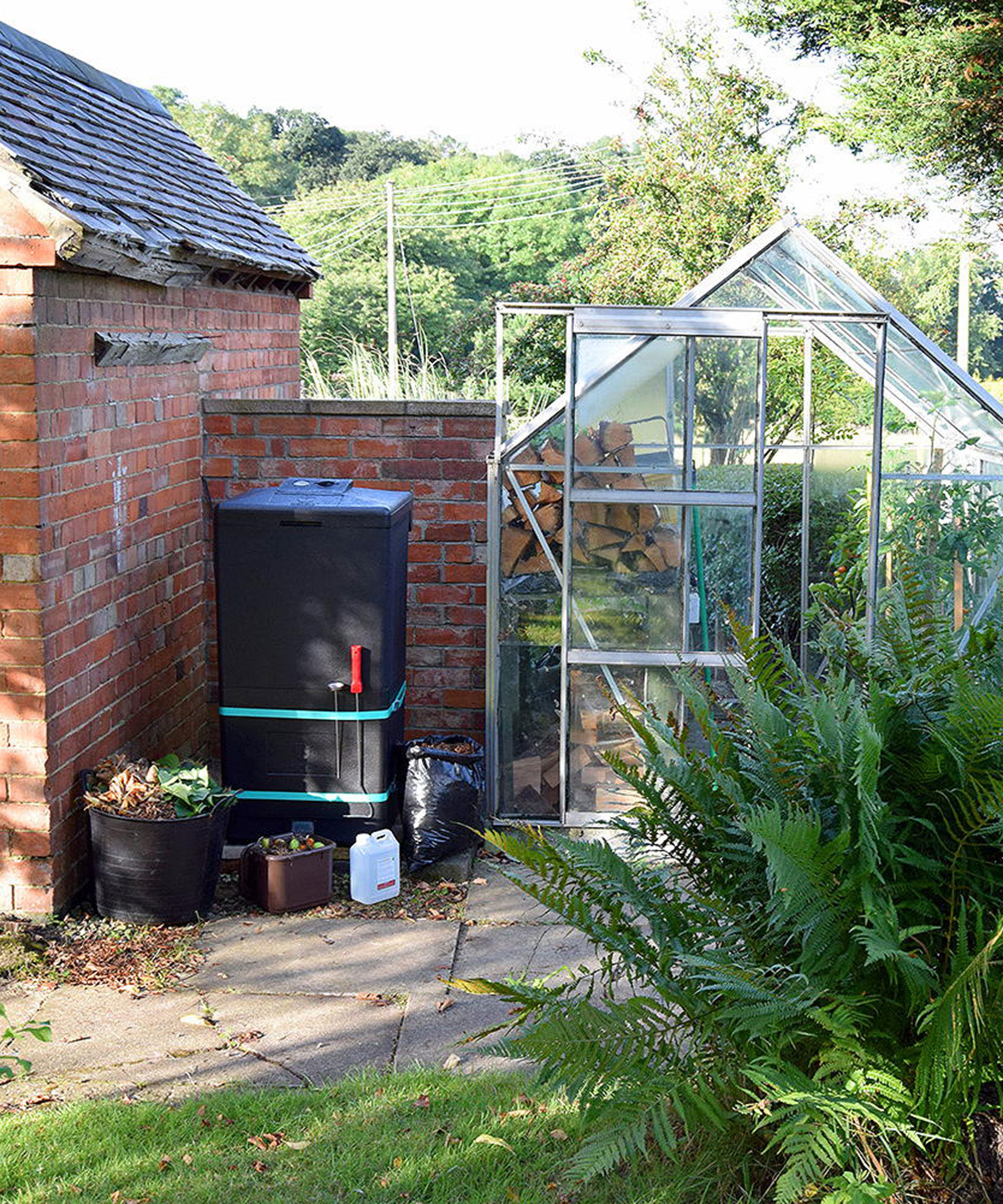
Is hot composting better?
The main benefit of hot composting is the speed at which waste material turns into compost. A traditional composting bin can take anything from six months to two years to transform waste into compost. Hot composting can take as little as four weeks to produce compost.
However, although the process of cold composting is slower, it’s often more appealing as there’s little that needs to be done to create your compost once you've set it up.
On the flip side, many shop-bought hot composters can take a wider range of home and garden waste, including meat bones, so it's a good way to ensure all food and garden waste is put to good use.
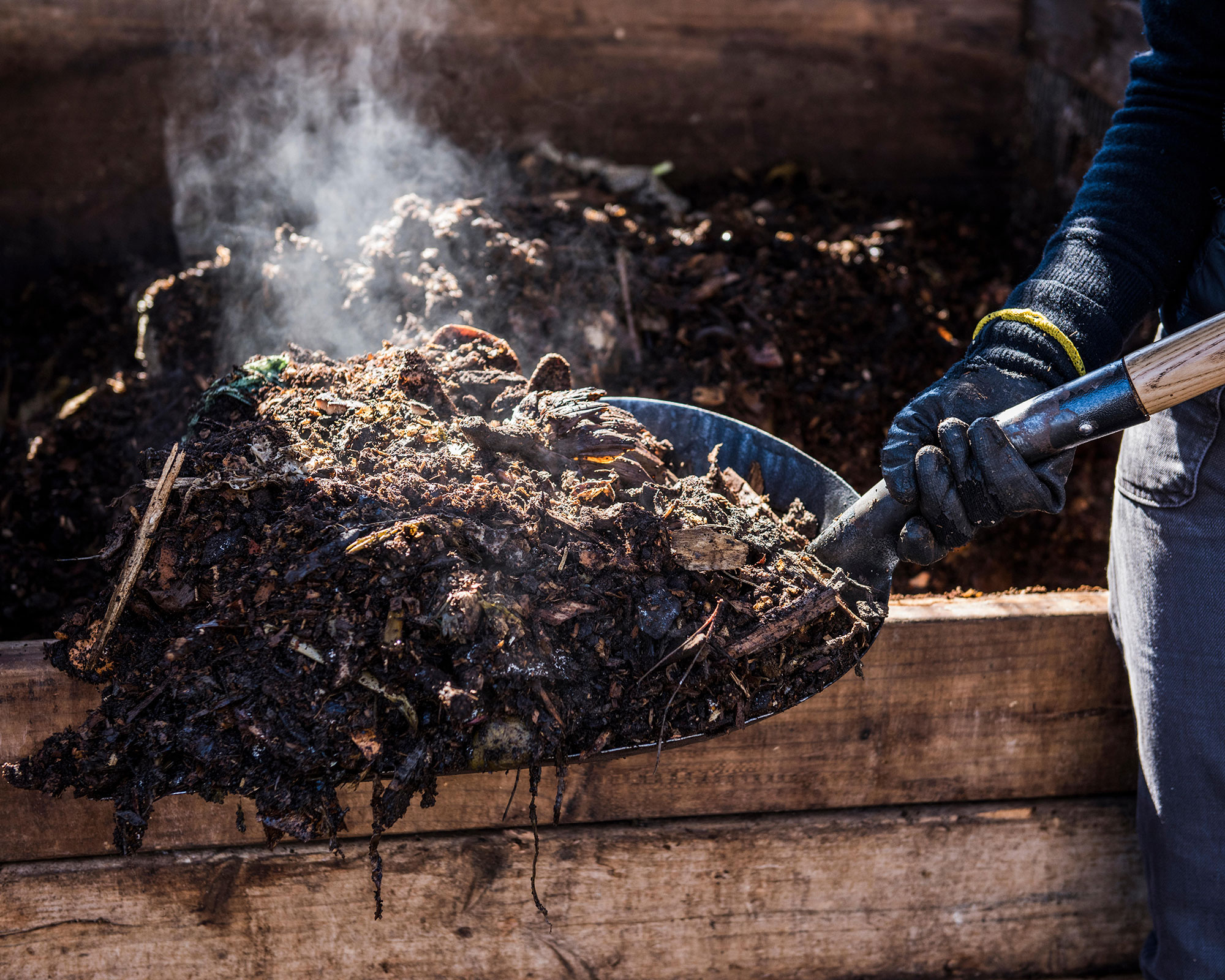
Hot composting: a step by step guide
- Mark out the space for your pile. It should be at least 120x120cm. Alternatively, invest in a hot compost bin to make your compost in.
- Chop up your ingredients. An easy way to do this is to run the lawn mower over them as you need to chop everything up so that it breaks down as quickly as possible.
- Add a couple of shovelfuls of ready-made compost that will work as an ‘activator’ to kick start the process, then mix all the ingredients in a pile or bin.
- Add water so that all the ingredients are evenly moist.
- Maintain the compost heap by keeping an eye on the soil temperature and moisture. The pile should heat up within 24 to 36 hours. Between 60 and 68˚C is the ideal temperature. You can check this with a compost monitor. Some of the bins come with a monitor in the lid too.
- When the pile starts to cool it's time to turn it. This restarts the microbial activity and gets things 'cooking'.
- If the compost is looking dry, give it some water. However, if the pile starts to smell unpleasant, it's probably because it's too wet. Adding shredded newspaper will soak up any excess moisture. If rain is due, cover the pile with a tarpaulin to stop it becoming waterlogged.
- After about two-three weeks, you should have dark brown, crumbly compost. It's important to let it 'rest' for a further two weeks before using it.
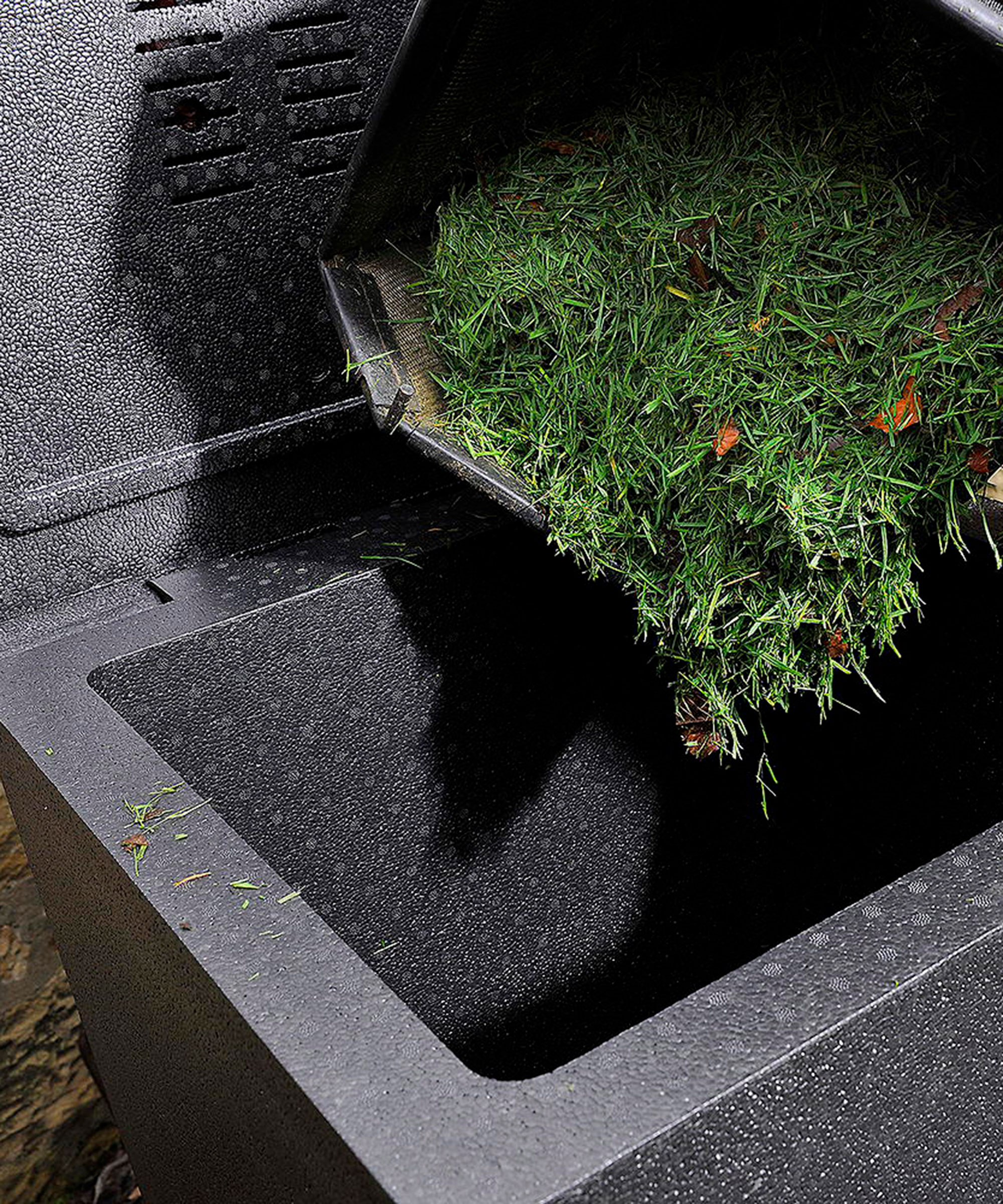
Can I turn autumn leaves into compost?
Add autumn leaves to the compost heap to work their magic in time for spring planting. Use the mower to shred to the right consistency then layer them up with grass clippings and kitchen compost as they take a while to break down. Cover and turn every so often with a garden fork to aerate.
There are lots of things in the garden you can use when it comes to making compost – and leaves are high up on that list. So if you’re doing some late summer tidying in the garden, it’s the perfect time to consider starting a compost heap.
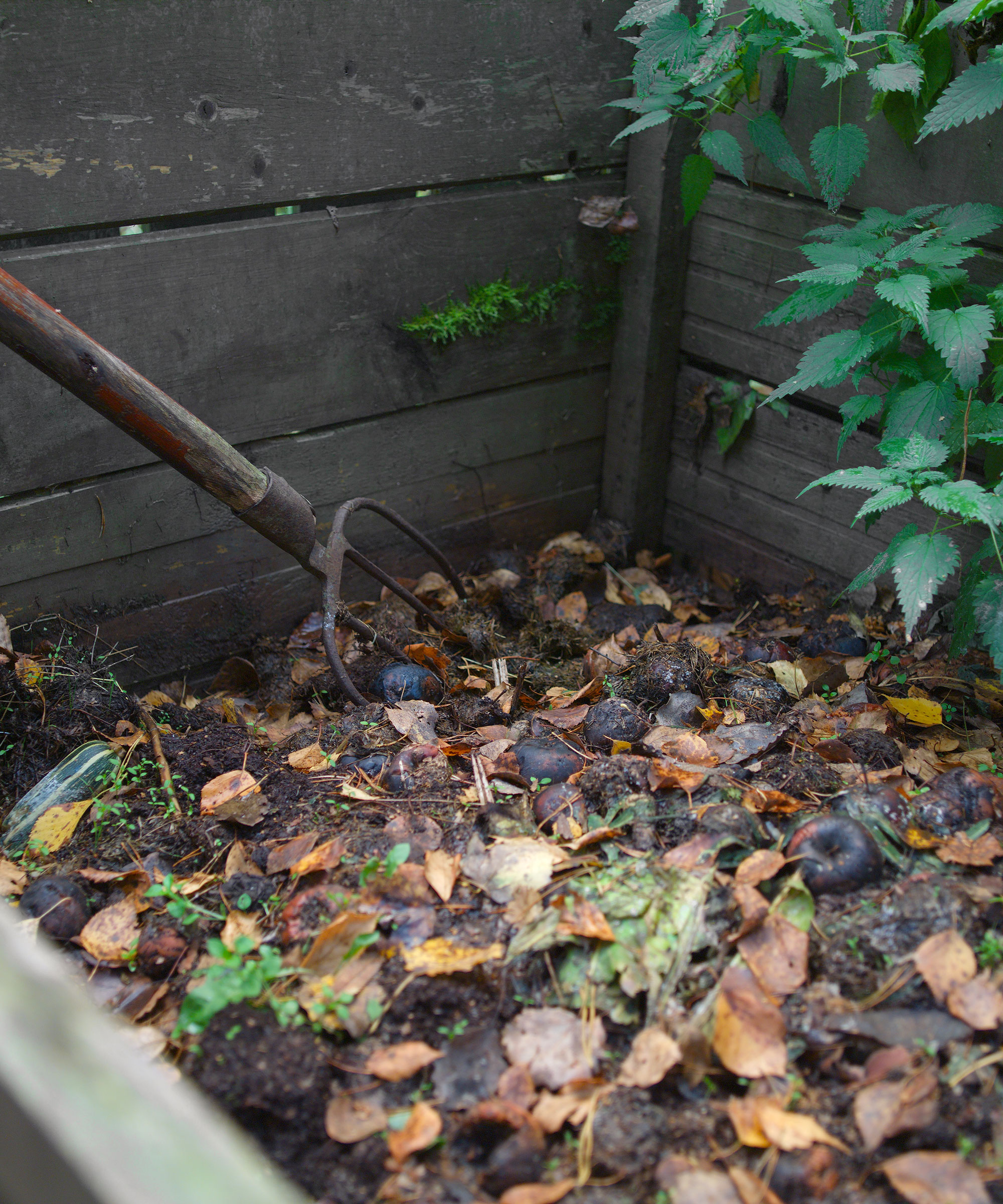
How do I use my homemade compost?
There are several ways you can use your homemade compost.
It makes a brilliant soil improver on all types of beds where plants are grown including vegetables, flowers and ornamental shrubs. You can use it as a type of mulch by sprinkling it on top of the soil, or simply dig it in.
You can also gently rake compost in around the base of trees, blend it with potting soil to revitalise indoor plants, or sprinkle it on top of your lawn as a soil improver.
As homemade compost is made from recycled kitchen and garden waste, it's too strong for growing seeds or bringing on young plants. It needs to be mixed in with other materials to make potting compost.
Compost is ideal for mulching, but as it acts like a fertiliser leave space around soft stemmed plants as it could potentially scorch and damage them.
The best time to use the compost is in spring as plants will be growing more actively and benefit from the nutrients as they are released from the compost.
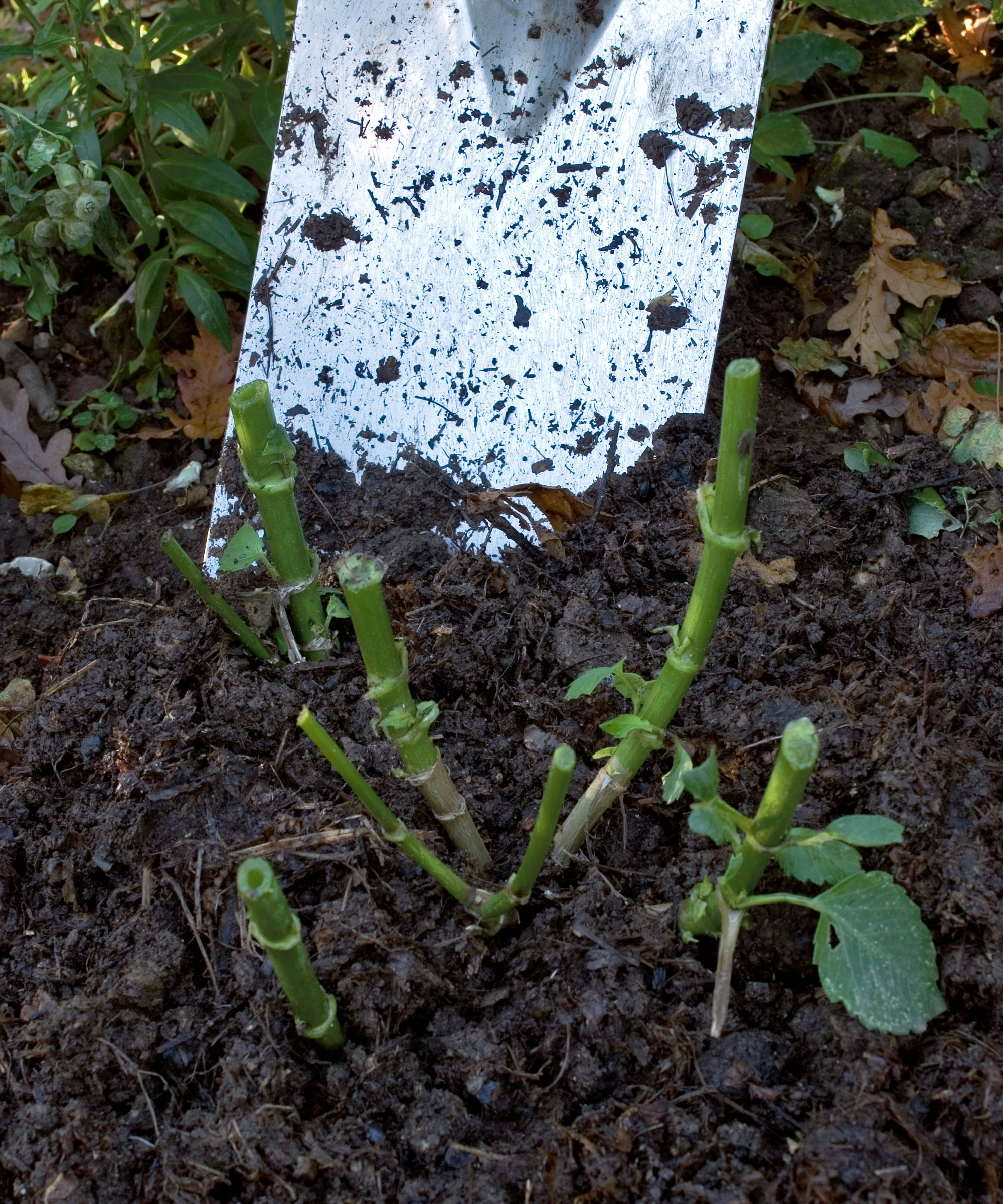
What is peat-free compost?
If you can’t make your own compost natural peat-free composts are widely available and a great alternative to peat-based products that cause environmental damage. They are a mix of organic materials like composted bark, coconut fibre (coir) and green compost, with the addition of grit, sharp sand or perlite to ensure the optimum growing medium.
There is a growing trend of boycotting bagged gardening compost made from peat in favor of peat-free alternatives. ‘If rainforests are the lungs of the world, then peat bogs are its armour – helping to create a vital balance in our atmosphere by storing over a fifth of the world’s soil carbon,’ says Marija Rompani, Director of Ethics and Sustainability at the John Lewis Partnership. ‘Peat bogs have been plundered for decades without fully understanding the consequences.’
'Intensive peat mining has adverse effects on the climate and destroys valuable ecosystems,' agrees garden designer Tom Massey. 'Many endangered species live in and around peat bogs and these are having their way of life threatened. If you want to go a step further than peat free look for an organically certified compost. This will need to comply with strict organic guidelines and will have higher environmental credentials.'
So if you're buying compost rather than making it, remember to look for approved peat-free mixes.

Sign up to the Homes & Gardens newsletter
Design expertise in your inbox – from inspiring decorating ideas and beautiful celebrity homes to practical gardening advice and shopping round-ups.
Lifestyle journalist Sarah Wilson writes about flowers, plants, garden design and gardening trends for Homes & Gardens. She has studied introductory garden and landscape design and floristry, and also has an RHS Level 2 qualification in the Principles of Plant Growth and Development. She is a regular contributor to Homes & Gardens and Livingetc. She has also written for Real Homes, Modern Gardens and Country Homes & Interiors magazines.
-
 6 things you should never throw in the trash – and what to do for safe disposal instead
6 things you should never throw in the trash – and what to do for safe disposal insteadFrom batteries to space heaters, experts reveal what not to throw
By Andy van Terheyden Published
-
 Worst-smelling plants to avoid – experts reveal 5 pungent species and suggest perfumed options to grow instead
Worst-smelling plants to avoid – experts reveal 5 pungent species and suggest perfumed options to grow insteadThese are some of the worst-smelling plants that can cause quite a stink
By Thomas Rutter Published